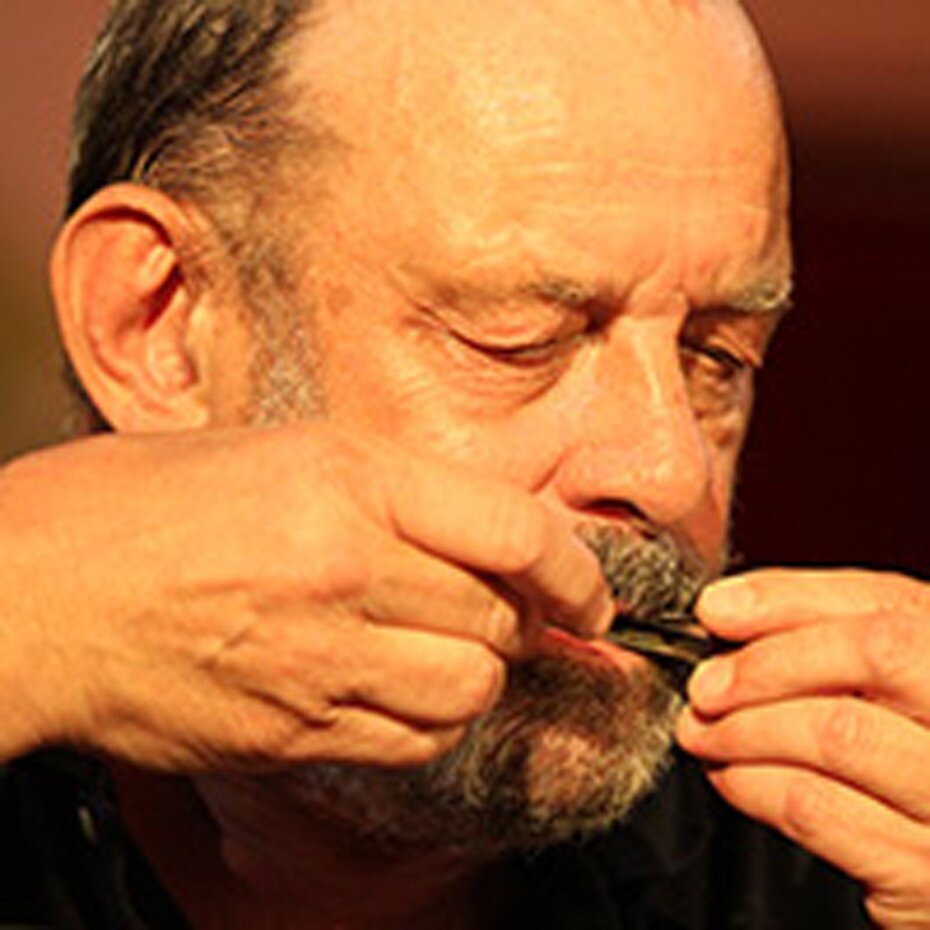The Swiss Anton Bruhin is one of the most experimental musicians and experts of the jew's harps community. A person who thinks and rethinks the instrument for over 40 years in new, surprising contexts, combines it with technical discoveries and presents it in the context of the artistry of sound. The film "Trümpi - Anton Bruhin - The Jew's Harp Player" by the Swiss film maker Ivan Schumacher conveys an impression of the multifaceted ways in which Anton Bruhin understands the character of the jew's harps and interprets them. In Central Switzerland, the word Trümpi is often used for the jew's harp. In the year 1511, the musician and composer Sebastian Vierung referred to the instrument using the term "Trumpel" in his work "Musica getutscht und außgezogen". Anton Bruhin says, "The jew's harp immediately fascinated me - that was an inspiration." It was small, cost barely 2 Swiss Francs, and was greatly undervalued."
Bruhin discovered the jew's harp at a time when the moog synthesizer and psychedelic music were popular. "At that time I realized that the jew's harp sounds like a synthesizer. In addition, the jew's harp is the only organic instrument other than the human voice where the sound is produced within the body. In spite of this, its sound is quite similar to the Moog. The jew's harp is a synthesizer. The rounded sounds can be produced directly without any circuits, without pushing buttons." The shape of the oral cavity and the tongue respectively determine the form of the voiced sounds, whose overtones appear in the sound of the jew's harp. These characteristics of the jew's harp still fascinate Anton Bruhin today.
"I am from the Canton of Schwyz. From the outer region, between Lake Zürich and Lake Walen. As a child in this area, I never saw or heard a jew's harp. I would most certainly have remembered if a jew's harp had been played, since as an infant I was already crawling up to the musicians to see where the sound was coming out of the trumpet." At age 18, Anton Bruhin saw and heard his first jew's harp. This was in Zürich at the end of the 1960s. A street musician taught him how to play the instrument. Bruhin was quickly able produce a sound from the metal body, and the musician gave him a jew's harp as a farewell gift. "I am convinced, however, that at least since the Middle Ages jew's harps have been played throughout all of Europe. In Switzerland, archaeological digs have discovered jew's harps dating to the 13th Century. Even these are not the oldest ones," says Anton Bruhin. The instruments have been discovered in large quantities in the moats of castles, suggesting the possibility that they were ubiquitous in people's daily lives, available in every market.
"The issue of the age of the jew's harp is interesting. As far as I know, the oldest jew's harp to have been excavated was made of Mongolian organic components and is more than 2,000 years old. The harp was discovered in permafrost. The first jew's harps were in fact made of bamboo or wood, in other words from material which normally decomposes." Interest in jew's harps fell off in the 19th Century, supplanted by the popularity of the harmonica, accordion and bandoneon. Like the jew's harp, these more sophisticated instruments utilized the principle of the suspended tongue. The quality of their sound was, however, better suited to the musical tastes of the age. They were louder and also better able to play distinct melodies.
For a long time Anton Bruhin has challenged the supposed fact that jew's harps cannot easily play a melody that listeners can recognize. "I just wasn't able to play a real musical piece. So I focused more on the jew's harp's percussion and sound. It was not until the 1990s that I adopted the interactive playing method used by the Tyrolean and Bavarian jew's harp players, with three or more jew's harps used in alternation." In addition, the change to handmade jew's harps with better sound had a crucial impact in permitting Anton Bruhin to produce melodies on the instrument. The overtone melodies are now easier to comprehend, and today Bruhin plays the instrument no longer as a soloist but along with other musicians such as Max Lässer and the Überland Orchestra.
